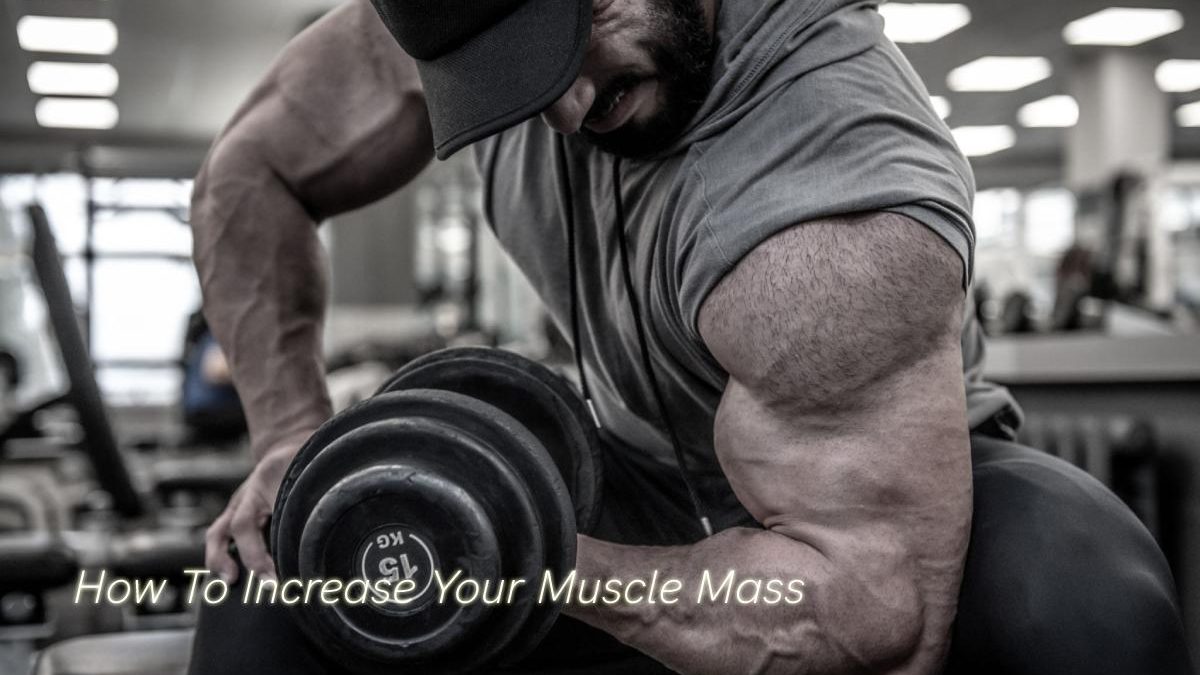These tips on building muscle mass can help beginning athletes who want to build muscle. The methods of increasing muscle mass that we propose below are also suitable for athletes with an advanced level who wish to progress.
The increase in muscle mass is a complex physiological process that takes time and commitment. Unfortunately, information about the best way to gain muscle is commercialized and, in some cases, wrong and even unhealthy. We make it easy for you with these tips.
Table of Contents
STRENGTH TRAINING WITH WEIGHTS
Many studies have shown that a weight you can lift a maximum of 8-12 times is the most effective for bulking up muscle mass (. Depending on the exercise type and level, that equates to 60-80% of your one-rep max (i.e., the heaviest weight you can lift for a single rep).
Once you have started increasing muscle mass, you must continue adding weight to see results. If 8-12 reps become easy, add more weight. Otherwise, muscle growth will stall. Every 3-6 weeks, you should reconsider the importance.
TRAINING WITH RESISTANCE BANDS AND WITH YOUR WEIGHT
Many people believe that the only way to build muscle mass is to lift hefty weights in the gym. And while lifting weights may be a quicker way to start seeing results, there are other ways to increase muscle mass.
You can strengthen your glutes and core, increase your pecs, and even get a ripped back with bodyweight exercises (or resistance bands).
Lifting a lot of weight is only necessary if you want to have a bodybuilder’s body. Still, this doesn’t necessarily mean having the strength that competitive athletes need.
Muscle growth is mainly due to increased volume and not the number of muscle fibers.
HOW MANY REPS PER SET SHOULD BE DONE?
The number of repetitions per set depends on each specific exercise and fitness goal. For example, it is feasible for many people to do between 30 and 60 jumping jacks, but if they were push-ups, that many repetitions would be too many for most people.
If the focus is to increase muscle mass, do between 6 and 12 repetitions per exercise. Once you can complete the reps while maintaining good form, build up to 20 reps for exercises like push-ups, rows, squats, etc. When 20 agents in good condition are feasible, add another set and reduce the reps to 6 or 8 per set. Increase the number of repetitions once you have completed all the series maintaining the form.
HOW LONG SHOULD YOU REST BETWEEN SETS?
It depends on your goals!
Suppose you want to increase a specific muscle with several repetitions of the same movement, rest between 60 seconds and 3 minutes between series. The idea is that you give yourself enough time to start full again. You’ll know if you’ve rested enough when you feel like you can begin the next set with good technique.
Doing supersets means training one muscle group on one side of the body and then training the opposite muscles during rest. For example, do a series of push-ups and go directly to a series of supermans. These two exercises oppose the same muscle group. Still, you can superset multiple muscle groups at once.
HOW MANY TIMES A WORKWEEK SHOULD YOU TRAIN TO INCREASE MUSCLE MASS?
Strength training-related soreness is known as Delayed Onset Muscle Soreness (DOMAT or DOMS). DOMAT can limit your ability to train multiple times or lift heavy weights, which is counterproductive to reaching your goals. It is essential to return to strength training carefully. Do the fewest number of reps and sets if you haven’t strength trained in a long time (if ever). Make sure you understand the benefits of super-compensation and its difference from overtraining.
DOMAT can appear one to two days after the training session and is usually worse on the second day. If soreness persists, another strength session two to three days later may help relieve DOMAT. Even a walk is enough to circulate the blood, oxygenate the muscles, and reduce lactate accumulation.
Everything counts! Weight training, yoga, pilates, running, cycling, swimming, dance classes, etc., make you sweat. For beginning athletes, the ideal is one strength training session the first week and two to four follow-up workouts.
SHOULD YOU CUT BACK ON CARDIO IF YOUR ONLY GOAL IS TO GAIN MUSCLE MASS?
Cardio or aerobic workout can impact the body’s capability to size muscle. If getting muscle bulk is your primary goal, you should reduce the amount of cardio.
SHOULD YOU LOSE WEIGHT TO GAIN LEAN MUSCLE MASS?
It is possible to increase lean muscle mass ratio and lose weight simultaneously through strength training. Muscle mass may not increase (it may even decrease) during weight loss. Still, increasing protein intake and maintaining strength training while reducing carbohydrates and fat can help maintain or increase lean muscle mass.
Think of it this way: if bodyweight falls but muscle mass remains the same, the muscle to body weight ratio has increased, even though the forces have not grown. In other words, lean muscle mass has improved.
WHAT ELSE CAN YOU DO TO GAIN Muscle Mass FAST?
Muscle mass does not increase during workouts. It decreases. Muscle growth happens during rest periods, as they allow the body to repair broken muscle tissue more substantially than before. Naps are also essential for muscle growth. Try to sleep between nine and ten hours each night, especially during periods of hard training.
CONCLUSION
The most important thing for effective muscle building (and any other training goal) is to train regularly.
If you are consistent, you will see how hard work pays off, seeing results faster. You will have stronger muscles, a more efficient metabolism, and a toned physique. You will be doing something good for the body and the mind.

